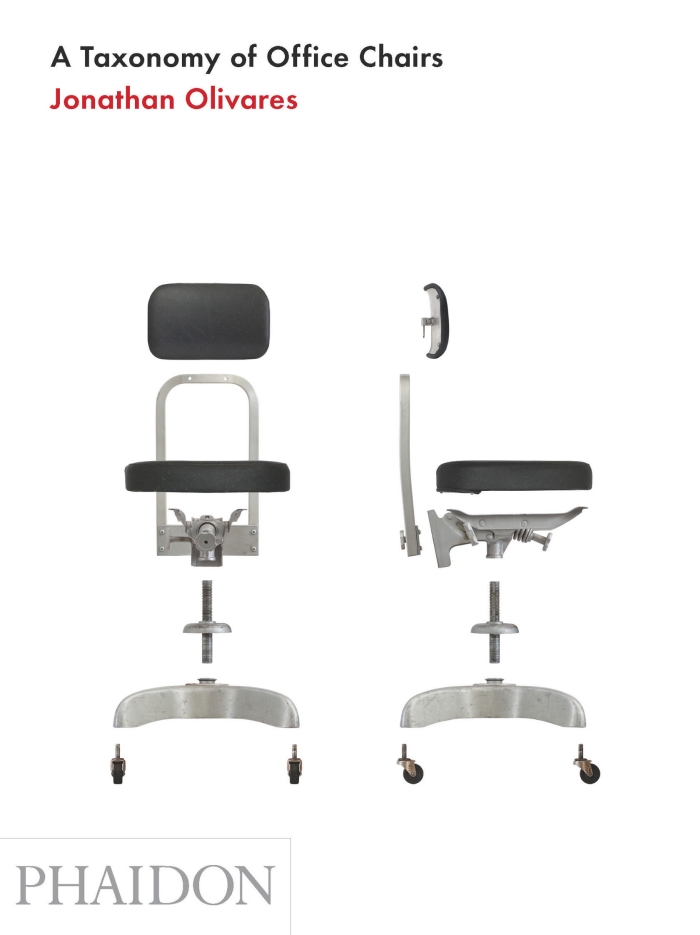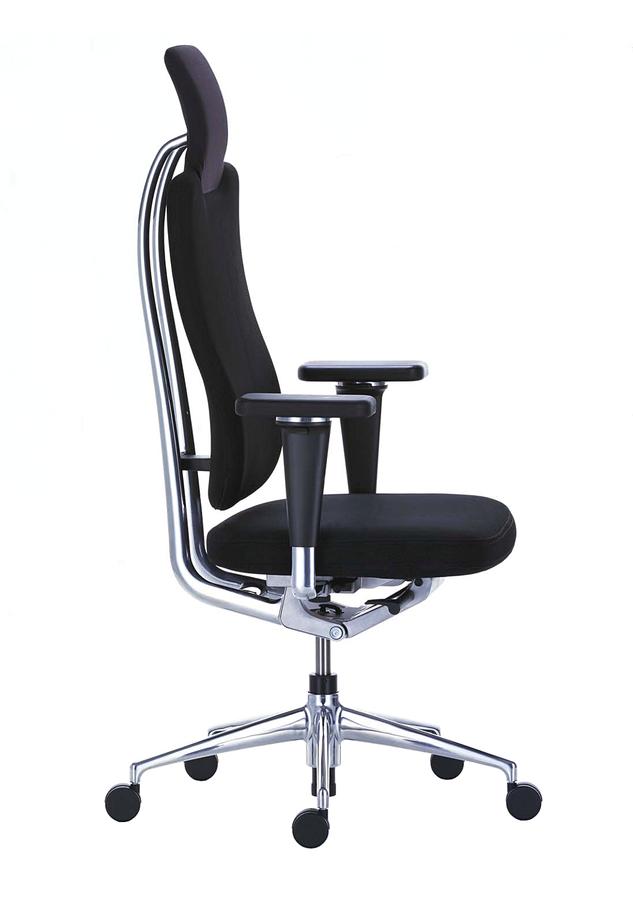As we recently noted, summer is slowly giving way to autumn and with it the realisation that long sunny days lounging in gardens or on poolsides will slowly give way to long sunless days in office chairs. Autumn 2014 also means for us Orgatec, Europe's largest office furniture trade fair, and an invariable flood of "new" office chair "designs."
Consequently, it should come as no surprise that we recently took our copy of Jonathan Olivares' A Taxonomy of Office Chairs from the (smow) bookshelf.
Published in 2011 A Taxonomy of Office Chairs charts the development of office chair design since the 1840s and in doing so seeks, as the title suggests, to present a taxonomy of the genre. Opening with a light, highly enjoyable saunter through the history of office chair design A Taxonomy of Office Chairs then moves on to provide a chronological catalogue of the 130+ chairs featured before reaching the real heart of the book: the taxonomy. Or perhaps better put taxonomies, for unlike animals, plants or nematodes which represent the result of a continuous, unconscious evolution largely influenced by environmental and behavioural factors, an office chair is an artificial construction composed of numerous elements each consciously selected and each with its own taxonomy. And so Jonathan Olivares leads us through the taxonomy of headrests, backrests, armrests, lumbar supports etc etc etc.

Sadly the thing with taxonomies, as any biologist can tell you, is that they are phenomenally complex. And equally phenomenally boring. Jonathan Olivares tacitly acknowledges both when he notes in the introduction that he chose to ignore nuts, bolts, textiles, control buttons and spring coils - thus not only making the same concessions, generalisations and leaps of good faith that all taxonomists make in order to keep some form of control over their expanding taxa, but also saving the readers from developing acute narcolepsy.
The fate we, and indeed Jonathan Olivares, have been saved from can be gleaned in the "Floor Contact" taxonomy and the question if it is relevant that the 1994 Aeron chair from Herman Miller was the first to have its foot glides attached to the chair base via an injection-moulded nylon plug rather than the previously ubiquitous metal plug ?
Yes, it is relevant. Boringly so. Because that means different production methods, different assembly procedures, different cost structures, different sustainability and environmental profiles, different repair options......
And while that all might seem irrelevant to the consumer. It's not. For such ultimately affects the final price of the chair.
The question of office chair textiles is equally, if not more relevant. And don't even get us started on levers for controlling height adjustment.

Rather than a "traditional" taxonomy for identification and classification purposes Jonathan Olivares presents a form of evolutionary taxonomy: just as jawless vertebrates gave way to fish who gave way to amphibians who gave way to mammals so did the bentwood looped armrests of the 1885 Thonet Revolving Rocking Armchair give way to the died-cast loop armrest of Charles and Ray Eames Aluminium Group which gave way to the injection moulded looped armrests of Charles Pollock's eponymous 1965 chair for Knoll.
As we say, not much fun. And interesting in the same way that car repair manuals are interesting. Or topiary.
It's a sort of antiquarian telephone directory for people with a weakness for office chairs.
As we say, it should come as no surprise that we recently took our copy of Jonathan Olivares' A Taxonomy of Office Chairs from the (smow) bookshelf.
It would, we feel, have been better had Jonathan Olivares done the research and then discussed in his book the genuinely very interesting social, cultural and political factors which have influenced the evolution of office chair design over the decades, making occasional reference along the way to those limited number of developments which went on to become established industry standards; rather than so meticulously listing every change.
In the introductory chapter, for example, we learn of the influence of health and safety regulations on office swivel chair design, how advances in chair production technology has led to fewer manufacturers, that bosses have always had better chairs than their galley slaves and that the first recorded mention of castors on an office chair is attributed to a custom construction by Charles Darwin. Thus placing the man who, in many ways, inspired evolutionary taxonomy in an evolutionary taxonomy.
Had Jonathan Olivares headed the lessons from what came after Darwin he could, we fear, have had an altogether more entertaining, more accessible book that would have been guaranteed to attract a wider audience.
As it is A Taxonomy of Office Chairs remains a work for those who want to know who first made use of the five foot injection-moulded synthetic base.
It was Mario Bellini with his 1984 Persona office chair for Vitra.
For all genuinely interested by that fact, A Taxonomy of Office Chairs by Jonathan Olivares is published by Phaidon Press.
